
Home

I have a youtube channel with over 1000 Videos!



Wills Pinterest !

Hi, Thanks for visiting my website. My name is Will and if you have questions
or would like to
contribute projects or ideas you can contact me 
How to make Foam Terrain for wargaming and dioramas
Foam is a standard and easy product for making very detailed and great looking terrain. Whether you are making the terrain for table top wargaming or for dioramas you will find that foam is perfectly suited to make great terrain. This is a tutorial that shows you all the tips, tricks, and techniques for making terrain.
Let's take a look at the foam. It comes in a lot of different shapes, sizes, thicknesses and types. And many types of foam can be used. One of the least expensive products that I use is called foamular. It is a building supply product and can be found at almost any home improvement store. It comes in large sheets and in different thickenesses up to 2 inches. The pink material in the picture below is foamular. I also have a youtube video on this tutorial. You can see the video here: How to use foam to make wargaming terrain or dioramas
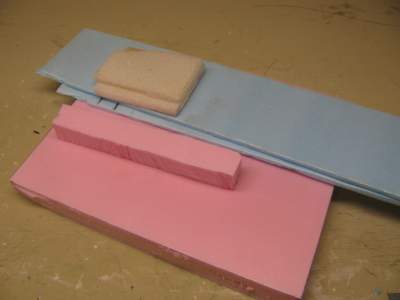
Finding, buying and selecting foam
Because there are lots of different types of foam you will find that some types are better than others when it comes to terrain making. In particular, some types will be better suited to carving, melting and making fine details. You can get a good sense of whether or not the foam will be suitable by taking a close look at it. The two pictures below show how foam varies and what to look for when selecting it. Amazon.com has lots of foam that is specifically made for terrain work. I have a page of it here.
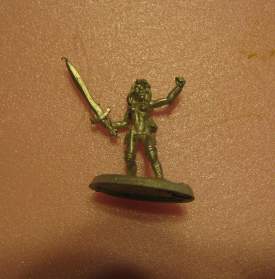
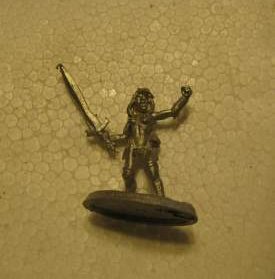
The important thing to look for is the granularity of the foam. How tiny is the detail? The picture on the left shows some really good foam. It is very uniform and you can't see the individual foam pieces. The picture on the right shows foam that is not so good. This not so good foam is composed of thousands of little balls of foam that have been stuck together. This type of foam will be a bit difficult to cut and will be difficult to get detail work out of. You can use this type of foam, it will just be a bit more difficult and not as detailed.
Amazon.com has lots of foam that is specifically made for terrain work. I have a page of it here.
Working With Foam
You can work with a variety of tools when it comes to sculpting the foam. The most effective way to do lots of work quickly is to use some kind of a foam cutter. These foam cutters are called "Hot Wire" cutters because they use electricity to heat up a length of wire. The heat of the wire will allow it to melt right through the foam.
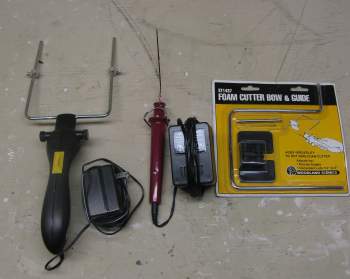
In the picture above you see two different hot wire foam cutters. The one on the left is a Hot Wire foam cutter made by woodland scenics. On the far right is an bow and guide attachment that goes with it. The red handled item in the center is called the styrocutter and it really comes in handy because of its shape. It can be used as a knife which gives you a lot of cutting freedom. It is better suited to delicate sculpting. I own both of these and use them regularly. They are both these cutting tools and others are available on Amazon.com: Hot Wire Foam Cutter - The Styro Wonder Hot Knife Cutter Plus
- The Styro Wonder Hot Knife Cutter Plus
Caution about cutting foam: Not all foams are made to be melted, some can give off toxic or noxious fumes. Check the manufacturers instructions before melting and always do this in a well ventilated area.
The picture below shows the Hot Knife cutter easily cutting through the foam.
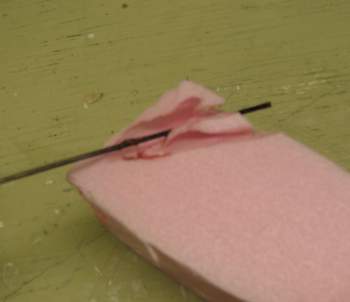
Using common tools other than heating tools
You can also use many other types of common tools such as x-acto knives, utility knives, files, sculpting cutting and carving tools. You can even use sandpaper to work on the foam.The picture below shows some of the tools that I use
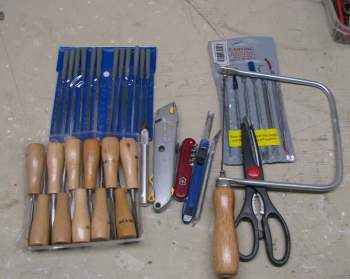
 Ok let's see how some terrain is made - continue with the tutorial
Ok let's see how some terrain is made - continue with the tutorial

Woodland Scenics Hot Wire Foam Cutter
This is the exact hot wire foam cutter that I use.
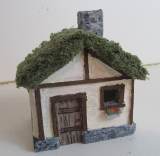 Make a Medieval Peasant's House
Make a Medieval Peasant's House
The First Tutorial in a new diorama series on making a medieval village diorama- It has that nice stucco and beam look that were popular in the Middle ages and there are a few nice extras like a unique thatched roof, a flower pot under the window and a short stone base. How to Make a Medieval Peasant's House
![]()











 Make a Medieval Peasant's House
Make a Medieval Peasant's House